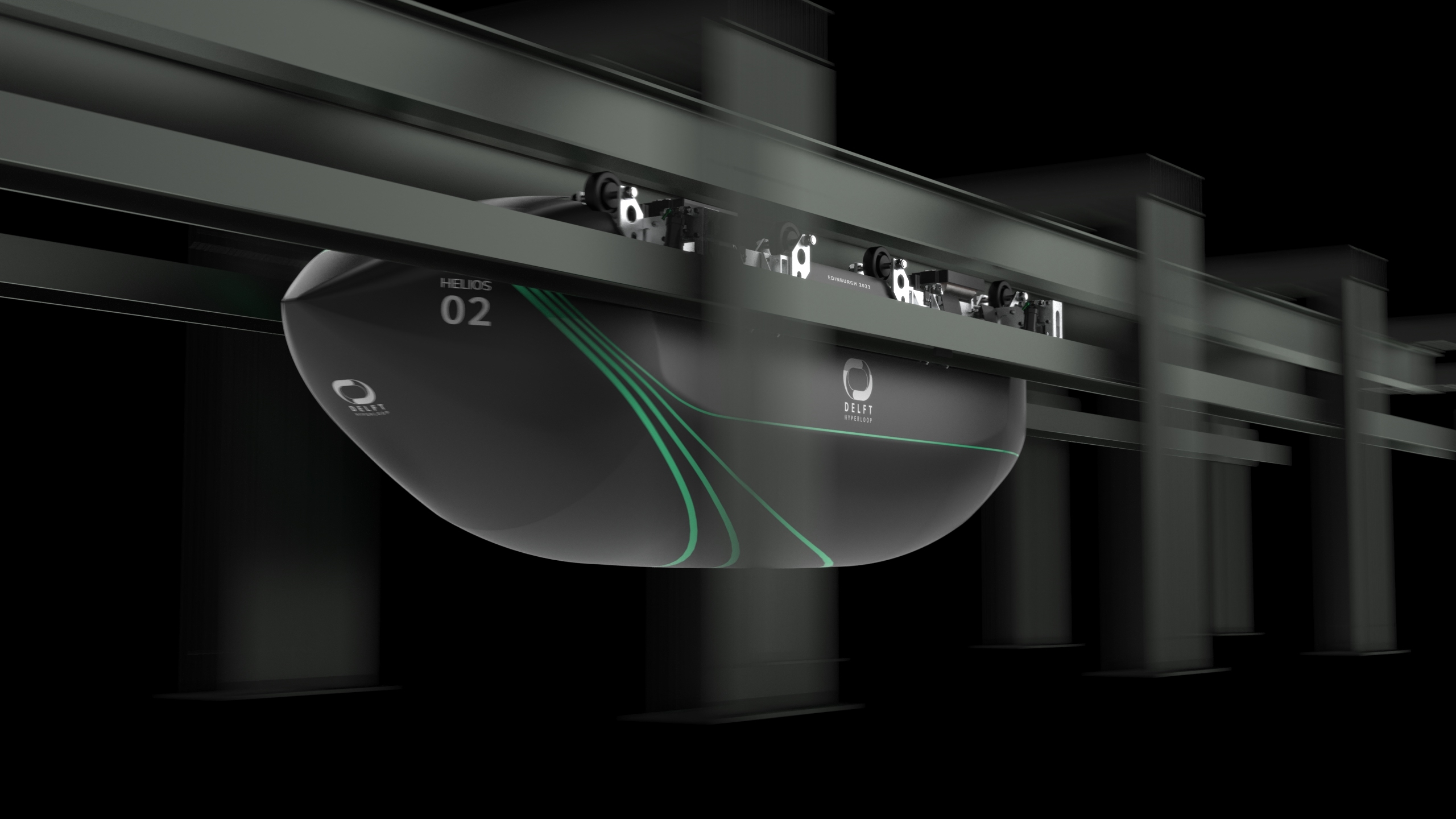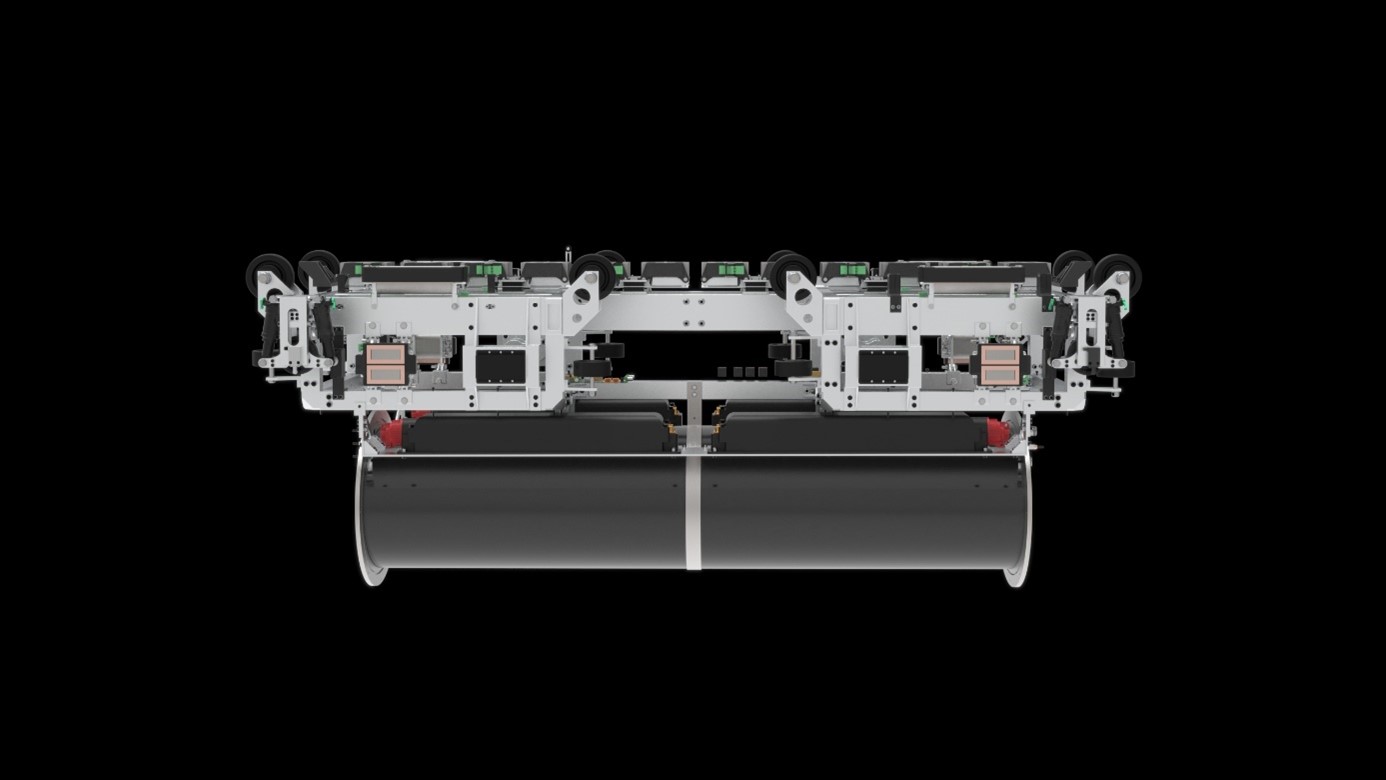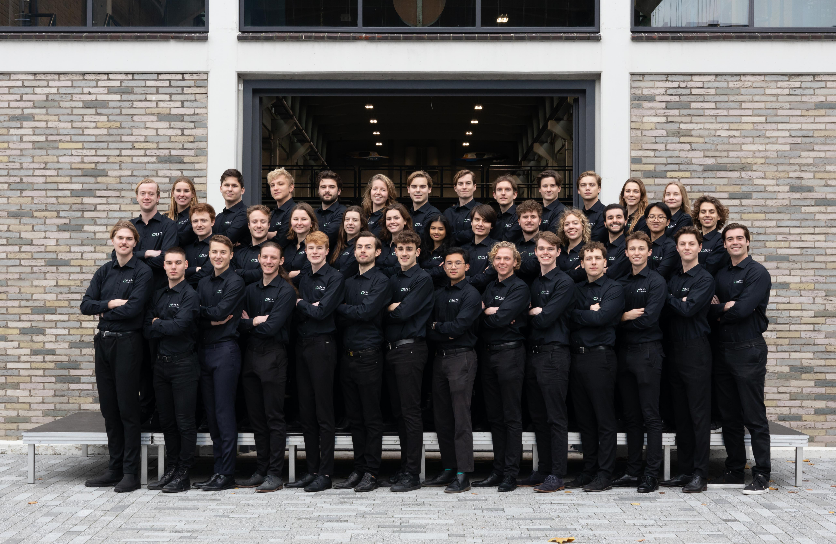Fully floating and scalable Delft prototype brings Hyperloop a step closer
Delft Hyperloop, a dreamteam of 41 TU Delft students, presented their latest design Helios II on 16 February at the Kunsthal Rotterdam. It is a fully floating pod that contains a cooling system and incorporates a new energy-efficient magnetic motor. With these three innovations, the team has designed a pod that is much more manufacturable on a large scale, bringing implementation in a hyperloop network a step closer. With the design, Delft Hyperloop will compete in the European Hyperloop Week in Edinburgh, Scotland, where they aim to regain the world title.
The Hyperloop could become a revolutionary new means of transportation that would combine the speed of an airplane with the convenience and energy consumption of a train. Because the pod floats through a vacuum tube, there is no air and rolling resistance and the pod can travel up to 1000 km/h. By using electromagnetic propulsion, there is also no use of fossil fuels. This sounds ideal, but before you can actually take a ride on the hyperloop, a lot still needs to be invented. That's why Delft Hyperloop develops a new pod every year, to get closer to the final and optimal hyperloop concept that could be implemented on a European scale.
An energy-efficient magnetic motor
This year, the team decided to build a motor that does not propel the vehicle from orbit but is located directly on the pod. This means there are far fewer precious materials in the track which ensures that the infrastructure will be a lot easier and cheaper to implement. To eliminate all rolling resistance, the entire pod will no longer have contact with the track. This is done by creating electromagnetic fields in the vertical and lateral direction of the pod. This is another necessary step to achieve extremely high speeds in the most efficient way possible in a full hyperloop system.
Cooling system
Because of all these electrical components on the pod, an enormous amount of heat is produced. To make sure that this heat stays away from most of the critical components, Delft Hyperloop has designed a so-called heat battery. This heat battery contains a type of wax that can store all the heat without increasing the temperature. This solution seems simple, but it is crucial.
With this innovative design, Delft Hyperloop is trying to show what is possible in the technological field. In this way, we are trying to catalyze a sustainable revolution of the transportation sector.
Umika Bhagole, Team Captain of Delft Hyperloop.


